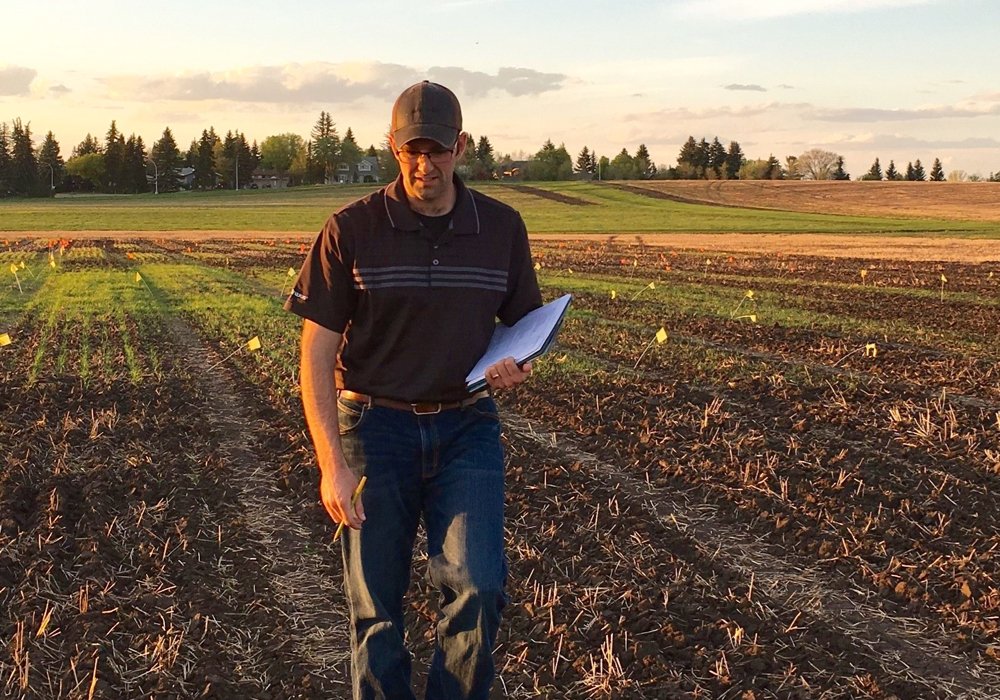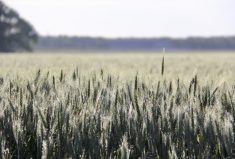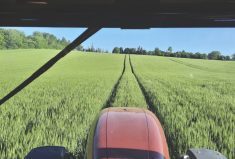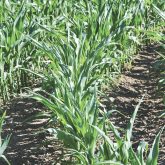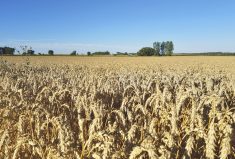Glacier FarmMedia – Graham Collier’s grandfather used to time his seeding by the frogs. Once the frogs started singing in the spring, he knew the ground was thawed and it was time to get out into the field.
Now, Collier is working on a less esoteric but still uncommon way to time wheat seeding — based on soil temperature rather than calendar date.
And that timing is a lot earlier than you might expect.
Read Also
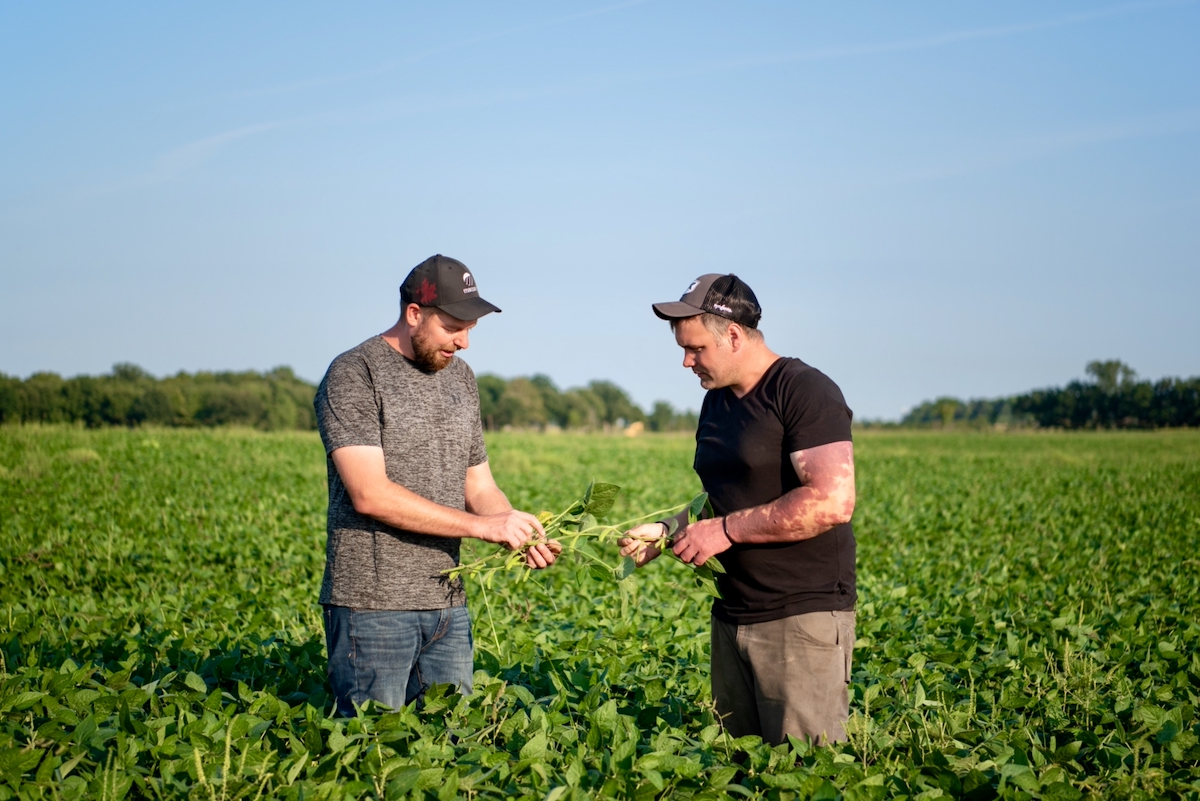
Ontario farmers partner for success
Ontario business partners, Matt Bergman and DJ Wassenaar, have been farming together for 10 years. Their focus on integrating unconventional…
“The ultimate goal is to determine that we have stability of yield and at least as good or better yield than conventional seeding timings by going ultra early,” said Collier, a PhD candidate in agronomy at the University of Alberta. “And everything we’ve done so far has shown exactly that.”
Since 2015, Collier and his fellow researchers have been exploring what it would take to get farmers out seeding their wheat in the late part of winter and the early part of spring across Alberta and Saskatchewan. In some parts of the Prairies, that might mean seeding in late April rather than mid-May, but in others, producers may be able to push that to as early as mid-February.
“Most previous work in Western Canada points to the earliest seeding dates having the best yields and the greatest return, but no one had ever really pushed that to find out how early is too early,” said Collier. “We decided to push that envelope to see if we could get to a point where we were too early.
“We were pleasantly surprised to find out that there wasn’t really a penalty for going too early.”
In fact, seeding earlier had some unexpected yield benefits.
“From 2 C to 6 C soil temperature, that’s when the peak yield opportunity occurred, which is quite a bit earlier than most growers are seeding,” he said.
That’s also when the yield was the most consistent year over year, he added.
“Even though you’d think that holding off and seeding later into warmer soil would get you more plants out of the ground and more seeds surviving to form plants, that didn’t actually hold true. In most cases, we were getting just as good or better yield stability at the earlier planting.”
And waiting too long can be costly. In Collier’s study, wheat seeded on May 1 in Lethbridge had a reduced yield and a negative return of around $83 an acre.
There were some regional differences, though. In southern Alberta, where the snow melts earlier and the fields are drier, the research team was able to push seeding quite early — in one case to mid-February — without any yield hit.
But while fields in northern Alberta didn’t see a drop in yield, they also never had as much of a yield benefit between the early and late seeding.
“We saw a bigger yield benefit in the south and a little bit less in the north,” said Collier. “But at the same time, the yield benefit we see is a result of those plants being out earlier, having more vegetative growth, more root mass underneath as we get to the longer days of the year.
“The earlier those plants are seeded, the earlier they’re out and the more growing degree days they have a chance to accumulate.”
Seeding rates
That’s particularly important for northern growers, said Samuel Peprah, manager of Mackenzie Applied Research Association (MARA) in Fort Vermilion.
“Here in Mackenzie County, we have a shorter growing season — between 85 and 115 growing days — so it’s important for us to look at ways we can have a longer frost-free growing period,” he said. “Being able to seed early is, I think, a very good option, and going forward, I believe most farmers will adapt to this.”

In that part of the province, most farmers seed around the second week in May, but by seeding based on soil temperatures of between 2 C and 6 C, Peprah’s research team was able to get into the field in late April — depending, of course, on whether the soil was dry enough to get in there with a seeder.
“We’re basically at the last frontier of farming in Western Canada. So what I tell producers is, it’s OK to go in at soil temperatures between 2 C and 6 C, but that’s unrealistic in northern Alberta,” he said.
“When you can move your equipment through the field, that’s when you can start seeding.”
The research teams also looked at different seeding rates between 200 and 400 seeds per metre squared (around 20 to 40 plants per square foot). Generally, the higher rates resulted in better yield and yield stability.
“With the ultra-early seeding, what we realized was that when we seeded them at about 200 seeds per metre squared, there was a very low yield,” said Peprah. “But for the ones that we seeded at 300 and 400 seeds per metre squared, the yields were good. There was less difference between the ones that were late and the ones that were early.”
A higher seeding rate can also help producers hedge some of their risk should something happen during the growing season, Collier added.
“The more you put in the ground, the more stable that system is.”
That higher rate becomes even more important if using untreated seed — something that’s not recommended in an ultra-early seeding system.
“Most of the farmers around here basically use farmer-saved seed from the previous year, but at MARA, we use certified seed that’s been treated,” said Peprah. “If you’re using farmer-saved seed, just increase the seeding rate higher — maybe 500 seeds per metre squared.”
Ideally, saved seed should have a germination and a vigour test prior to seeding, and the rates should be adjusted to target around 40 plants per square foot.
But you’re really going to want the seed treatment.
In an ultra-early seeding system, the plants will be slower to emerge — between five to 20 days later, depending on the conditions and the location. And that’s when the seeds are most vulnerable to environmental stressors and disease.
“That seed might sit in the ground for a little while,” said Collier. “It’s going to be cold, it’s going to be wet, and it’s going to be growing fairly slowly. It’s going to be at risk.
“So in my opinion, that’s an important part of success in this system — to have a fungicide seed treatment at minimum on your seed to preserve your germination and the safety of that seed while it’s sitting in the ground.”
Ultra-early variety selection
Choosing the right variety will also be important — and that research is in the works right now. In early experiments, Collier used hard red spring wheat check varieties and compared them to cold-tolerant genetics, and found no difference in performance.
More recently, he looked at different varieties across wheat classes, and while the classes themselves had yield differences, preliminary results showed that “the stability of yield was no different if it was a hard red variety or a soft white or a cold tolerant.”
“The growers who have done it in the field so far have used different classes and have had good success with them,” he said. “Right now, we’re comfortable to recommend hard red varieties for ultra-early seeding and we’ll hopefully expand that recommendation here in the future.”
Producers may also be worried about the risk of frost, but Collier’s research showed that wheat is “very robust to freezing.”
“Over the course of this study, we put these plants through an awful lot of pressure,” he said. “The earliest seeding date we hit was Feb. 16 in 2016 in Lethbridge. After that seeding date, the air temperature at night got below zero 37 times, and there was no detriment to yield for that ultra-early seeding.”
Given that, Collier’s advice to producers who are considering ultra-early seeding is to stop worrying about the calendar date and start looking at the soil temperature.
“Get out there earlier than you probably thought you ever could have and give it a try,” he said. “It may not work for everybody, but it has worked very well for us over the last five years. Time and time again, it’s been shown to provide some benefits.”
And as the climate continues to change across the Prairies, ultra-early seeding will be one way producers can adjust their management to take advantage of that changing environment.
“If we look at what we’re seeing in our climate, we’re looking at warmer and drier days in the summer. That’s a pattern that’s increasing,” he said.
“At the same time, we’re seeing our last spring frost happening sooner — our growing season is starting earlier. We have the ability to move forward and capture that.”
This article was originally published at the Alberta Farmer Express.

